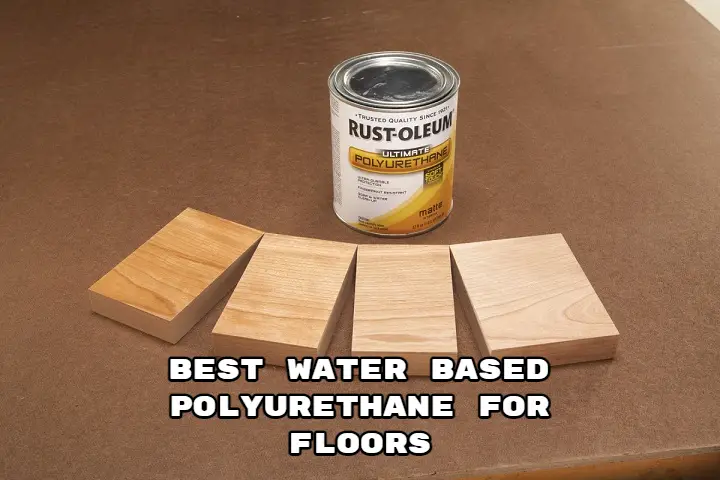Looking for the best water-based polyurethane for floors can be extremely time-consuming and challenging. Many brands claim to have the best formula but only sometimes deliver on it.
A water-based polyurethane sealant can protect your floors from damage and make them look better.
But how do you know which one to choose?
In this article, we’ll show you the best water-based polyurethane sealants so that you can choose the best option for your floors.
We have done extensive research and compiled a list of the best water-based polyurethanes available on the market:
- Best professional Water-Based Polyurethane – Vаrаthаnе Water-Based Ultimate Polyurethane
- Best water-based polyurethane for cork floors – Loba AT Supra Water-Based Polyurethane
- Best water-based polyurethane for hardwood floors – Rust-Oleum Clear Varathane, Diamond Water-Based Interior Floor Polyurethane
- Best water-based polyurethane for concrete floors – Eco-Tuff Clearcoat Concrete and Wood Floor Sealer Polyurethane
- Best non-yellowing water-based polyurethane – Minwax Ultimate Stain Floor Finish
- Best matte water-based polyurethane – Rust-Oleum 260165 Ultimate Polyurethane, 1 Quart, Matte
So, let’s keep going!
Table of Contents
6 Best Water-Based Polyurethane for Floors Reviews
Best professional Water-Based Polyurethane – Vаrаthаnе Water-Based Ultimate Polyurethane
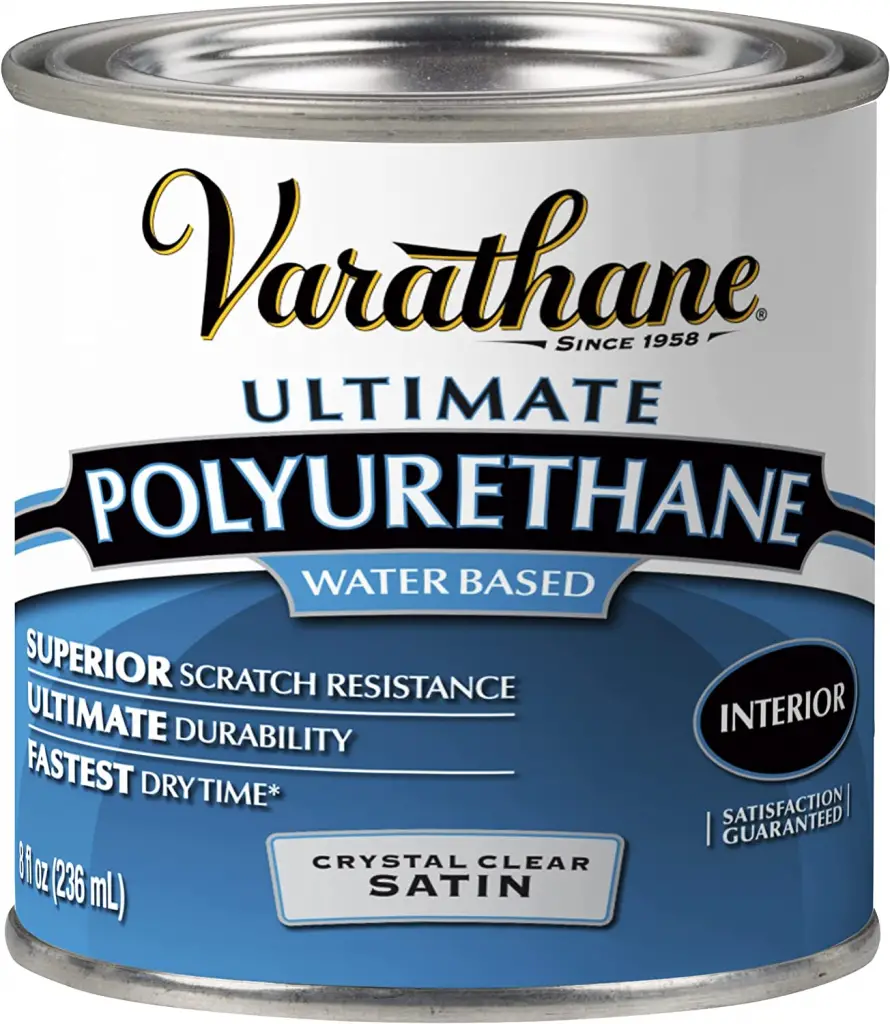
Varathane is one of the best water-based polyurethanes for furniture. This form of polyurethane possesses all of the polyurethane features. It is regarded as one of the finest in terms of scratch and stain resistance.
Moreover, this finish is crystal clear and won’t turn yellow. It dries fast to touch in 30 minutes, and you’ll only need soap and water to clean it up. It is ideal for indoor wood surfaces, including trim, cabinets, windows, furniture, and more.
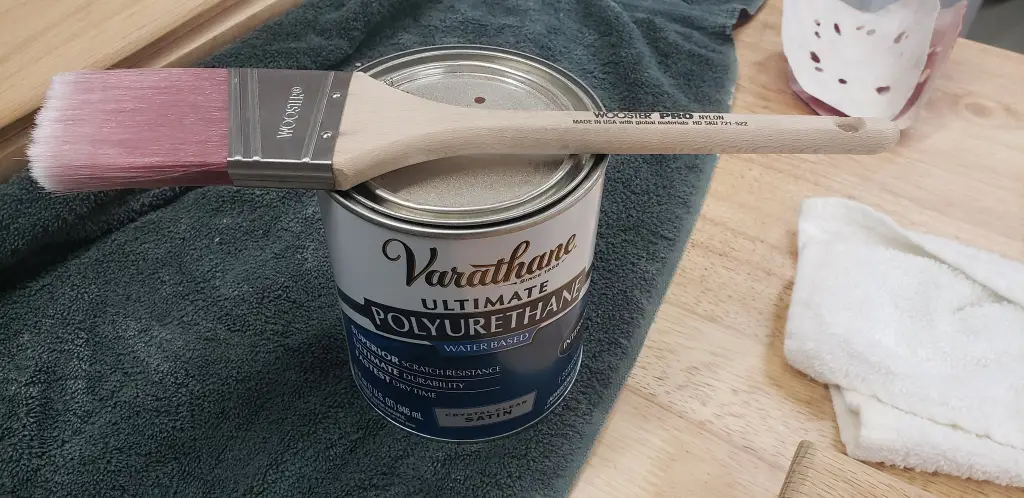
Pros
- Dries fast to touch
- Little odor
- Highly durable and elastic
- High scratch and chemical resistance
Cons
- Not eco-friendly due to high VOC
Best water-based polyurethane for cork floors – Loba AT Supra Water-Based Polyurethane

Loba is German-made high-grade two-component water-based polyurethane. It has excellent scratch resistance and suppleness (allowing it to move with your hardwood as the humidity changes). It is extremely chemically resistant and long-lasting.
If your poly finish choice is a formulation that’s resistant to chemicals, slip, extreme scratch and wear, the Loba is your go-to product. The product is highly durable and is perfect for interior surfaces such as cork floors, wood, trim, PVC and VCT floorings, furniture, and more. It’s an ideal formulation to recoat factory-finished UV-cured floors and wood.
Pros
- Looks beautiful and elegant
- Has low odor
- Smooth and silky to touch
- Suitable as a sealer for cork floors
Cons
- Requires many coats
Best water-based polyurethane for hardwood floors – Rust-Oleum Clear Varathane, Diamond Water-Based Interior Floor Polyurethane
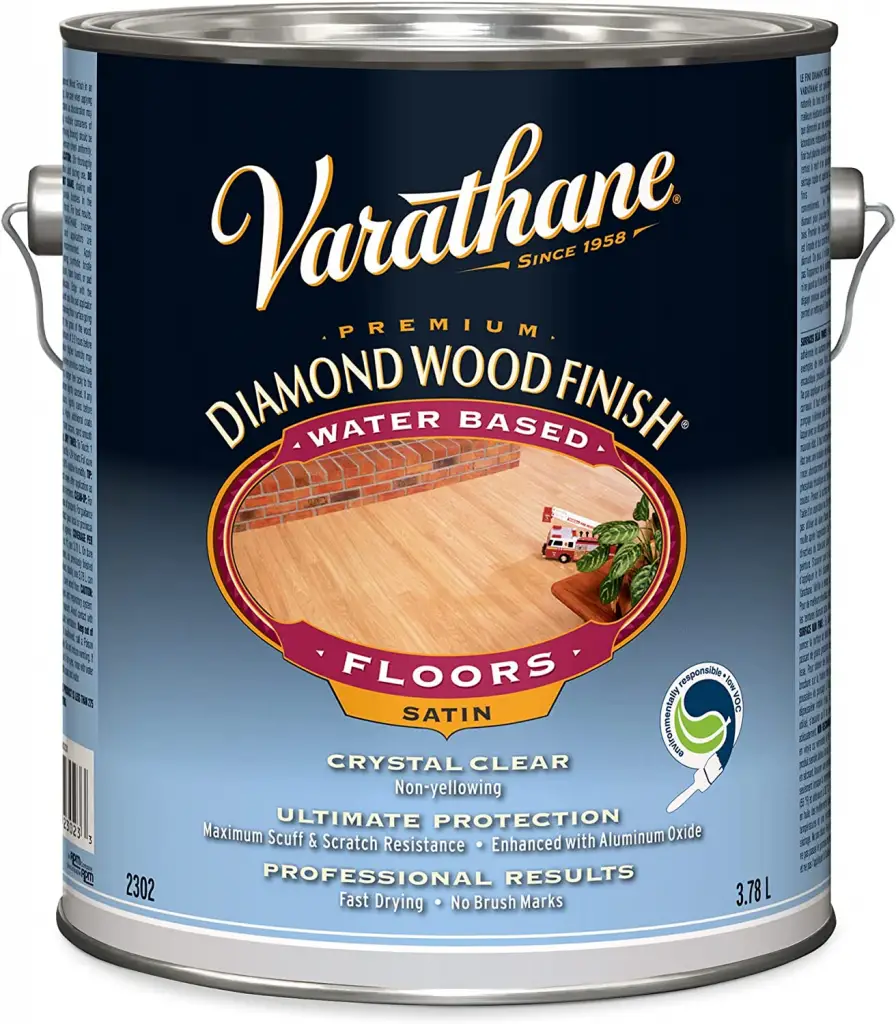
Rust-Oleum water-based polyurethane has all of the qualities of well-made polyurethane. The main benefit of this product is that it is built for high-traffic areas.
This formulation provides an amazingly crystal clear finish that won’t yellow. It has high resistance to stains, abrasion, household chemicals, wear, and scuff. Its superior durability and elasticity make the product sought-after.
Perfect for hardwood floors, the Rust-Oleum water-based product is one of the best floor leveling and easiest-to-handle a water-based product on the market.
Pros
- Dries quickly
- Has a clear finish
- Not slippery
- Easy to apply
Cons
- Can whiten when mixed with a large amount of water
Best water-based polyurethane for concrete floors – Eco-Tuff Clearcoat Concrete and Wood Floor Sealer Polyurethane
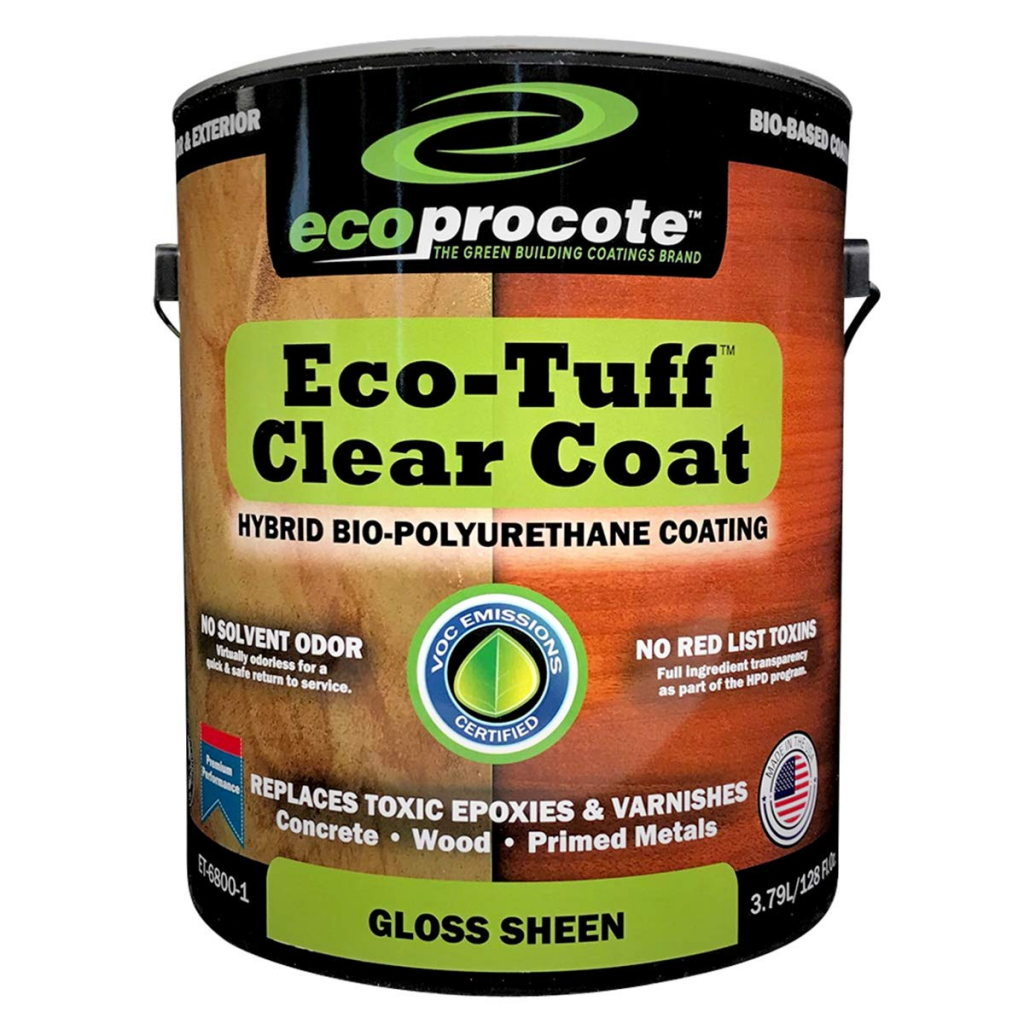
Scratch, crack, moisture, UV, and chemical resistance are all features of polyurethane sealer for wood, floor, and concrete surfaces, assuring a long-lasting gloss for indoor and outdoor applications.
The eco-Tuff clear coat is an absolutely non-toxic, odorless, and easy-to-use finish. You only have to use HVLP sprayers to apply this concrete and wood sealer. Besides, the sealer is highly compatible with a wide range of surfaces, including cement, wood, masonry, concrete, and natural stone floors.
It’s all good if you want it for your doors, garage floors, cabinets, or tiles.
Pros
- Non-toxic and little odor
- Offers multilayer protection
- Versatile and suitable for a wide range of surfaces
- Non-toxic
Cons
- Requires many coats
Best non-yellowing water-based polyurethane – Minwax Ultimate Stain Floor Finish
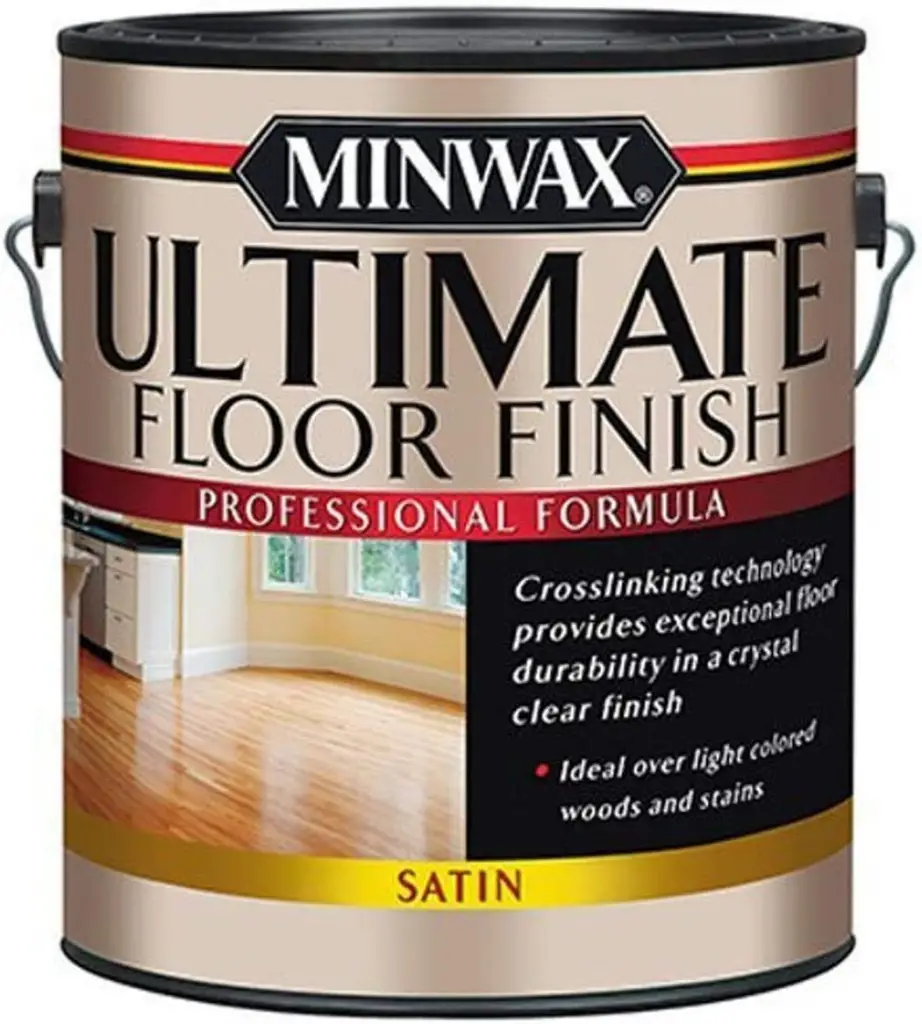
Hardwood floors, as well as lighter-colored woods and stains, can benefit from this formula. Because of the self-crosslinking technology, this coating maintains its hard floor quality over time.
Minwax is designed for easy use. It will not turn yellow nor produce any lap marks or foaming. The product is quite durable and its high elastic property makes it suitable for use on the cork.
Yet, it won’t break the film. It has coverage of 600 sq. ft and its low VOC makes it eco-friendly.
Pros
- Has little odor
- Bonds well with hardwood
- Has a tough finish
- You can recoat every 2 hours
Cons
- To get a good finish you have to apply many coats
Best matte water-based polyurethane – Rust-Oleum 260165 Ultimate Polyurethane, 1 Quart, Matte
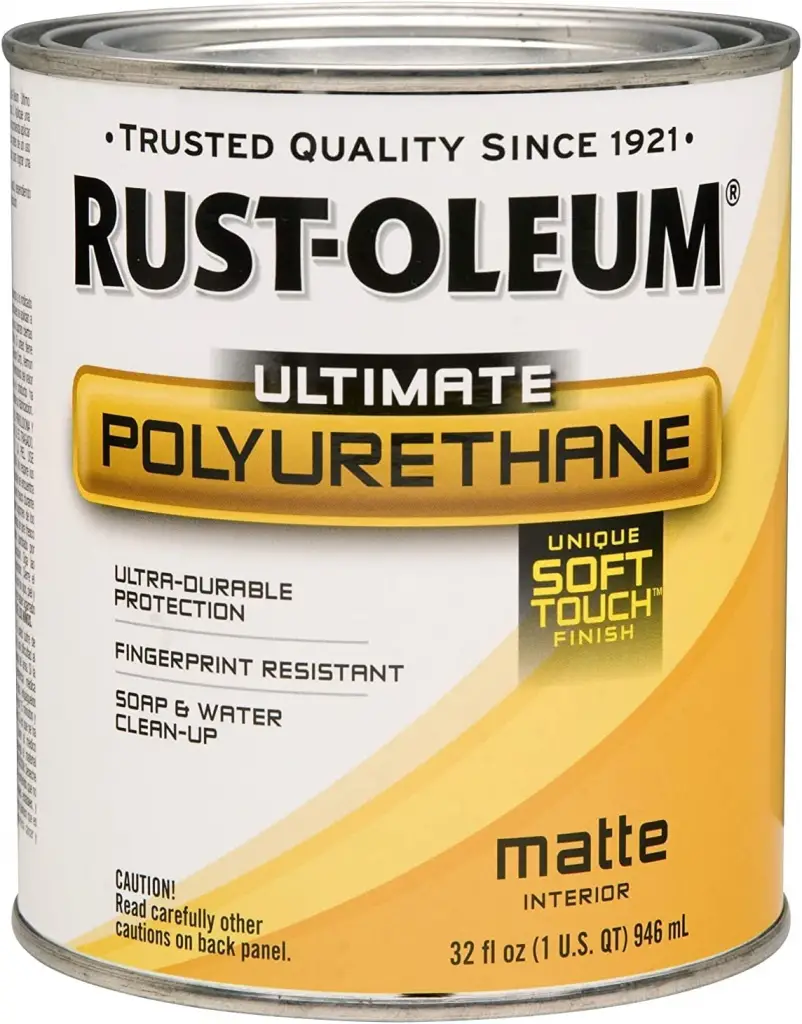
Rust-Oleum adds a polyurethane coating, to the hardwood surface, keeping it free from fingerprints and smudges.
In addition, this is a long-lasting product that won’t show any signs of wear and tear, including scratches and stains. You will always receive a smooth, silky finish that keeps the furniture looking new.
The Rust-Oleum poly has amazing coverage of up to 31.25 square feet. When used, you can recoat after 2 hours. The product also boasts incredible durability and offers a natural and classic appearance. It has a low odor and scratch, dust, and stain resistance.
Pros
- Dries very fast
- Has a soft texture
- Protects against scratches and scuffs
Cons
- Darkens the wood
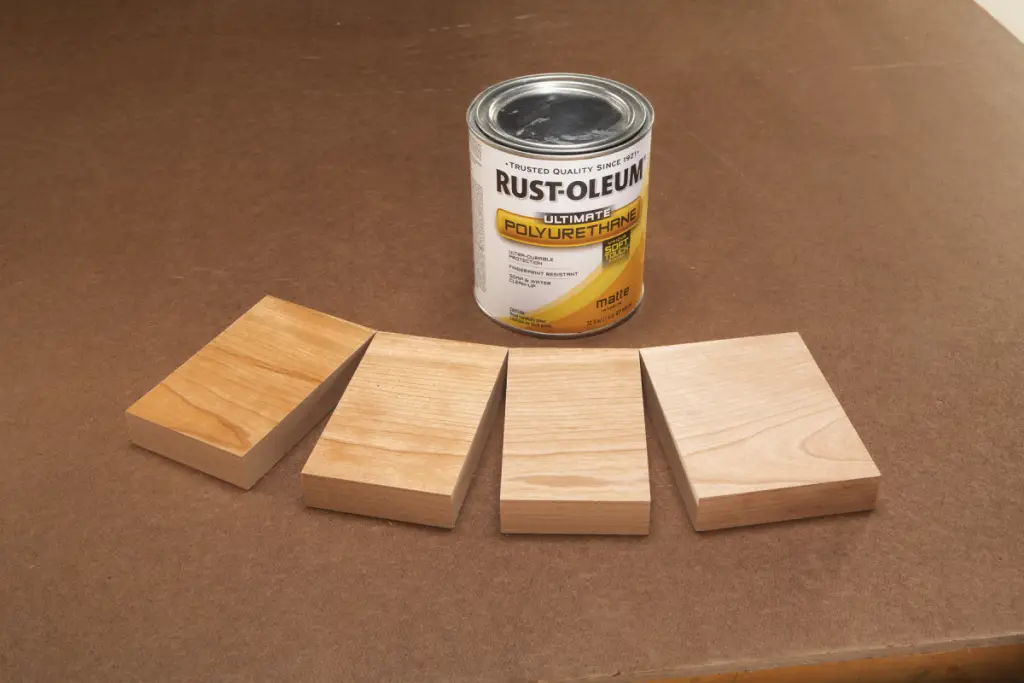
Can water-based polyurethane be used on floors?
Yes, the DIYers can use a paint roller, a floor roller sleeve, or a brush to apply the substance to their floors. Water-based polyurethane provides a darker hue and a darker finish.
Nevertheless, the following suggestions should be considered: Polyurethane must be applied after the floor has been sanded smoothly.
Quick-drying water-based polyurethanes are an excellent way to put a lasting finish on your flooring without disturbing your entire life. Hardwood flooring enhances the appearance and value of a property. They’re warm and inviting, with an appearance that nothing else can match.
To get the best results, apply three coats of water-based polyurethane. This is especially important in high-traffic areas.
Pros of Applying Water-Based Polyurethane
There are many advantages of using water-based polyurethane, such as ease of clean up and quick drying. Water-based polyurethane is a good alternative if you’re looking for a transparent finish.
Durability
It can last for 10 years if the high-quality product is administered professionally and 5-6 years if an inexperienced person does it. Because water-based paint is dent-resistant, it is more durable.
Clean up
With water-based poly, you will only need water and soap to clean the product from the surface and make it look smooth and elegant. No chemical is required for a clean-up.
Cost
Oil-based quality products can cost up to three times as much as water-based ones. However, contractors’ fees are frequently the same regardless of which is used because of the longer drying times associated with oil-based products.
Dry time
Water-based finishes dry quickly (usually within two hours), allowing you to apply many coats in one day.
Clear Finish Maintains Original Color
Using a water-based floor treatment preserves the wood’s original color and enhances the texture. A deeper shade of wood is achieved almost instantly using an oil-based finish. The oil finish becomes golden amber with time and in the presence of sunlight.
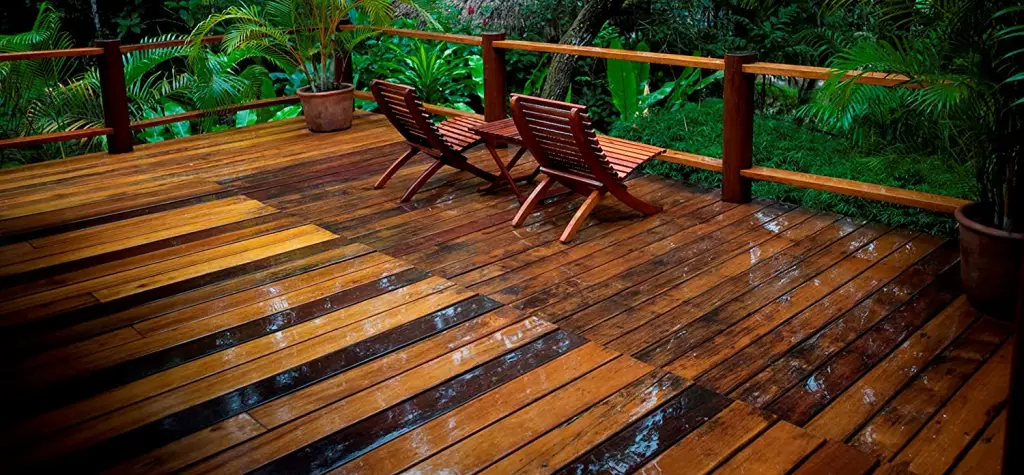
Eco-Friendly, Healthier & Safer
Plant-derived compounds replace petroleum solvents in water-based polyurethane. These items are better for everyone’s health and well-being. You can rest easy knowing that no one will be harmed as a result of exposure to volatile organic compounds (VOCs).
Cons of Applying Water-Based Polyurethane
In addition to the advantages, there are also the following disadvantages of polyurethane:
- They cost twice as much as oil-based ones
- You will need to apply for a coat every 2 years
- They don’t give wood the same deep glow as oil-based polys.
- When using a waterborne poly, it’s necessary to mark each swath of finish as you go because some of them are so transparent.
- Oil-based polymers typically contain 45 to 50% solids, whereas water-based polymers typically contain 30 to 35% solids.
Method of Applying Water-based Polyurethane to Floors
Because of the quick-drying period, using the precise application method with each coat is critical.
Tools needed:
- Tack cloth and mop
- Mineral spirits
- Trowel
- Edger
- Water-based Poly – matte, satin, semi-gloss or high-gloss
- Natural bristle brush or foam brush
- Buffer
- Trim pads
- 220-grit sandpaper/Sandpaper block
- Vacuum cleaner
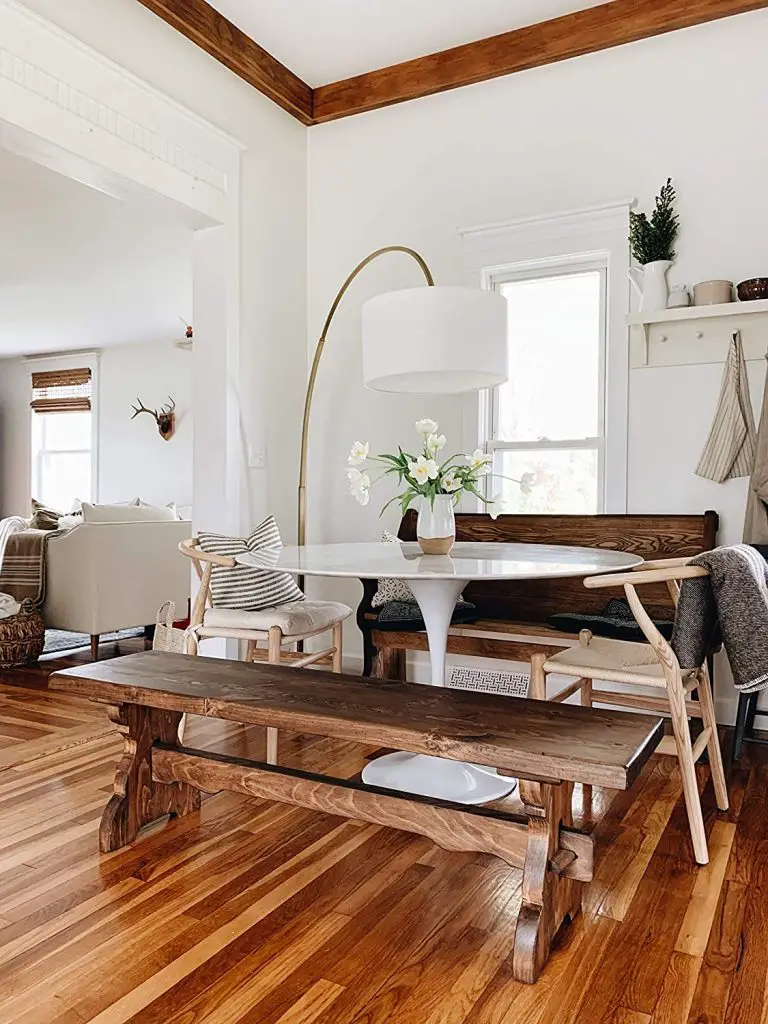
Step-by-Step Guide to Applying Water-Based Polyurethane On Floors
Step 1: Clean and sand the room
Before applying the finish, sand the floor using a sanding screen or sanding pad. Keep an eye out for dirt and dust hiding in cracks and crevices and on the walls and window sills.
A water-based finish can be applied at a temperature between 65 and 70 degrees Fahrenheit. Adjust the heating and cooling systems as appropriate to maintain a comfortable temperature. To avoid affecting the finish, turn off the heat or air conditioner before applying.
Step 2: Start applying the finish along a wall
For best results, follow directions from the manufacturer. Some finishes require only a few shakes of the container, while others require the addition of a hardener and subsequent filtering.
When applying the finish, make sure to use a synthetic applicator because they distribute the finish rather than soak it up. T-bars are the ideal option for regions that are large enough. Filling in tiny areas is easy by using brushes, rollers, and pads.
As a starting point, paint a line of finish around the perimeter of a wall. We recommend at least 4 inches in width and a grain direction that follows. Cut into the finish using your applicator. Then, use the brush to sweep the finish across the floor, covering a few feet. Pull the applicator towards you with a moderate amount of force while maintaining a consistent level of pressure on the finish. Smooth strokes are preferred over ones with a lot of extra movement, which might result in bubbles.
Step 3: Turning at the End of a Run
Whenever you come up against a wall and have to restart a run, turn the T-bar towards the unfinished part of the floor, being careful not to get too much finishing on the wall. It is best to place the T-bar in a dry area near where you plan to pour. Move the applicator back and forth a few times to soften it up. Make sure your T-bar doesn’t end up on the floor by sanding the polish off of it.
A fresh run begins with your T-bar placed against the wall at your turn line. Lift the applicator just a little bit as you pull it. Because the turn line is fanned out, it gives the floor a smooth, uniform appearance.
Step 4: Continue Applying Finish to Cover the Whole Room
You can use this procedure to cover all the hardwood floorings in the room simultaneously. Any time you need to thicken your pour line, pour more finish onto the floor. There must always be a minimum of four inches of pour line for the following run.
Step 5: Leave Space to Exit the Room
Keeping oneself cooped up in one part of the room, unable to move around, is the last thing you should do. Plan your runs ahead of time such that your last run terminates at the room’s doorway so you can simply step out when you’re done.
After arriving at the doorway, completing your task might be challenging. A tiny bit of finish is ideal, or you can pour some on the floor to finish the job. Make a zigzag motion to evenly spread the last coat of finish on the floor while you stand in the room’s entryway. Pad out the applicator as you would after a run by leaving a little dry space. After that, softly run over the zigzag design to remove any turn lines and smooth it out.
Step 6: Put on the Finishing Touches with a cut-In Pad
It’s best to drain any excess finish with a cut-in pad, so you may use any container you choose. Use your cut-in pad to touch up the final piece of the floor if necessary.
Step 7: Wait to Add Another Coat
Water-based hardwood treatments are normally dry in about an hour and are ready for another coat in 2 to 3 hours. However, the container will tell you how long it will take to recoat. Expect the floor to take longer to dry if the room is extremely damp or chilly.
Apply another coat of sanding and cleaning once the floor has been well-cleaned and dried. If you’re applying a second coat within 24 hours of the first, you don’t need to sand the floor again. Even so, sanding can help you achieve the most outstanding results.
Step 8: Repeat the Process until the Floor has a sufficient Coating
You need to apply a suitable number of coats of finish to protect the floor. Because the solids in water-based finishes are typically between 30 and 35 percent, applying four applications is necessary to preserve the hardwood from damage adequately.
It is possible to have the floor ready within a day if you apply the coats as soon as they are ready.
A water-based finish is unbeatable when it comes to preserving and showcasing hardwood floors.
Tools for Water Based Polyurethane
The use of waterborne polyurethane often requires the use of tools such as:
- Paintbrush
- Corner tool
- Cleaner
Corner Tool
A professional painter invented the Accubrush to assist his teams cut in paint edges more quickly and consistently, and it has now become a time saver for both professionals and homeowners.
It uses a unique roller, shield, and brush combination for paint edging. To save you time and aggravation, Accubrush does the most time-consuming element of painting for you.
Cleaner
Quick Shine products offer the most cutting-edge technology and ecologically friendly solutions for every stage of life, from finishing to routine cleaning. To this day, Quick Shine continues to raise the standard in product performance by pioneering aqueous coatings and non-toxic, zero-residue hard floor cleaners.
Paintbrush
The handle is made of smooth hardwood that provides a comfortable grip while painting for an extended period. The medium-strength, thick, synthetic filaments have been engineered to retain more paint to save time and provide the desired gloss with less paint.
Filaments are long-lasting and sturdy enough to be washed a lot. When painting or doing trim work, a thinner tip makes it easier to manage and cut in. These brushes will serve you well even if you’re a seasoned artist or just starting.
FAQs
What type of polyurethane is best for floors?
Bona Traffic HD is the best water-based polyurethane finish, whereas Duraseal is the finest oil-based polyurethane finish. Steps and hallways receive the most wear and tear, thus a high-quality finish is especially vital in these locations.
Can you sleep in-house after water-based polyurethane?
Several coats can be applied in a day with water-based finishes since they dry quickly. If you start early enough, you can apply the necessary four coats of paint and sleep in the room that night.
What is the most brutal polyurethane finish?
Because moisture-cured urethane has the highest VOC content, it is regarded as a hard finish. It’s difficult to apply since it dries so quickly, so DIY’ers should avoid it.
What is The Best Water-based Polyurethane for Floors?
Having the best water-based polyurethane solution is ideal for floors since it protects them from scuffs, stains, and abrasions, as well as from the effects of common home chemicals.
The translucent and glossy surface of the formula adds to the overall aesthetic appeal of the floor. Due to its resistance to UV radiation, the surface will not become yellow or fade.
All of the formulae mentioned above are effective; however, the Loba AT Supra Water-Based Polyurethane is my personal favorite.
Stains from both water and oil can be applied to it because of its unique design. The warmth and beauty of classic polyurethane are still there, along with the added benefit of increased durability.

My name is Mark, and I am a software engineer and the founder of OnWoodWorkingArt.
I grew up with a passion for woodworking and now have my woodworking studio with a group of like-minded friends who love to create woodworking. My dream is to have a more extensive workshop and be able to make woodworking my main business.
